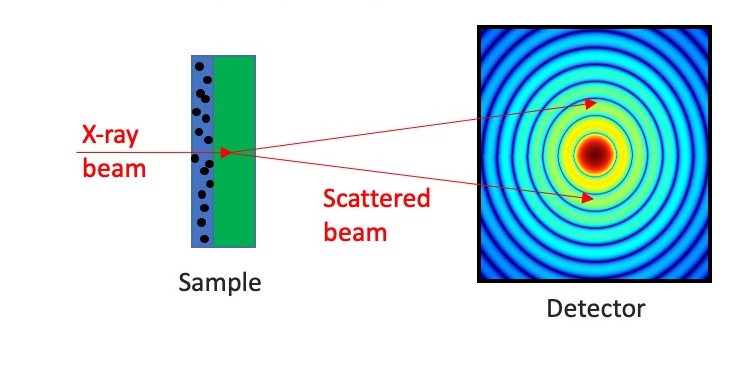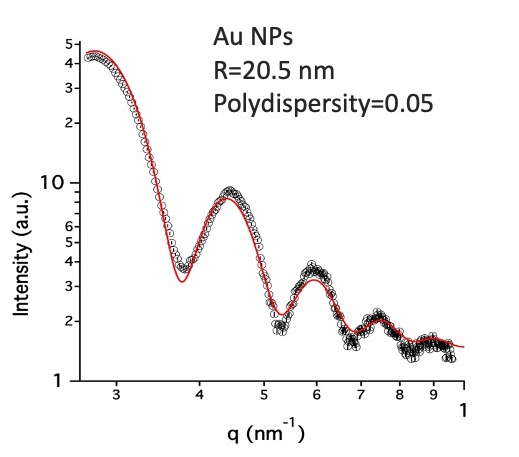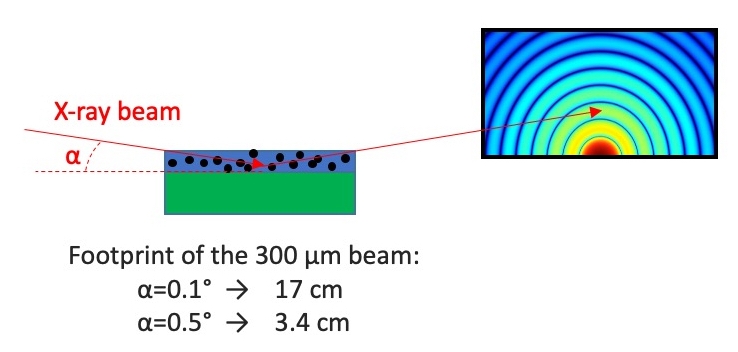Surface and Interface Analysis using X-ray Scattering: Core Capabilities Overview
Grazing Incidence Small Angle X-ray Scattering (GISAXS) and Grazing Incidence X-ray Diffraction (GIXD) are powerful non-destructive tools to obtain statistical structural information on the micro and nanoscale from the surface, buried interface, sub-monolayer, monolayer and multilayers in inorganic and organic materials. GISAXS typically provides information about the density correlation and shape of the objects at the surface or buried interface. While GIXD is sensitive to material’s crystallinity, crystal orientation and phases present. These methods can be efficiently used to correlate structure and properties for various types of materials such as polymers, ceramics, metals, semiconductors, liquid crystals. An important advantage of these techniques is that there is no or minimal sample preparation required therefore not only materials but also working devices (e.g. solar cells, transistors, batteries) can be analysed using a combination of GISAXS and GIXD.
| GISAXS | GIXD | |
| X-ray energy | 3.0 – 40.0 keV (monochromatic beam) | |
| Beam size | < 100 nm - 5 mm | |
| Typical materials studied | Film coatings, multi-layered devices, solar cells, nanostructured films, battery electrodes, air/water interface, buried interfaces | |
| In situ study | Yes | Yes |
| Typical sample lateral size | 1 mm – 10’s of cm | 1 mm – 10’s of cm |
| Typical sample thickness | 10 – 300 nm | |
| Typical measuring time | 1-20 min | |
| Dimensions probed | 1 – 100 (1000) nm | 0.1-5 nm |
| Information obtained | Nanoscale density correlation; shape of nano-objects at the surface or in thin films | Crystallinity; phase(s) identification; crystals orientation |
| Sample requirements | Density contrast | Long-range ordering at least in one direction* |
*pair distribution function (PDF) analysis can be done in case of amorphous material
Transmission vs Grazing Incidence Geometry: from bulk to surface
Transmission (XRD, SAXS):
Advantages:
- Surface sensitive (minimum penetration depth ~10 nm)
- Possibility to study structures at the interfaces
- High scattering intensity ideal to perform in-situ and time-resolved study
- 2D Grazing Incidence X-ray Scattering (GIXS): lateral and normal ordering probed at the same time
Further Reading:
Direct observation of the evolving metal–support interaction of individual cobalt nanoparticles at the titania and silica interface. Chengwu Qiu, Yaroslav Odarchenko, Qingwei Meng, Peixi Cong, Martin A. W. Schoen , Armin Kleibert, Thomas Forrest and Andrew M. Beale. (Edge Article) Chem. Sci., 2020, 11, 13060-13070, DOI: 10.1039/D0SC03113E
If you think that surface X-ray analysis could be helpful for your R&D work do not hesitate to get in touch!
Read about more of the techniques and services we can offer.



